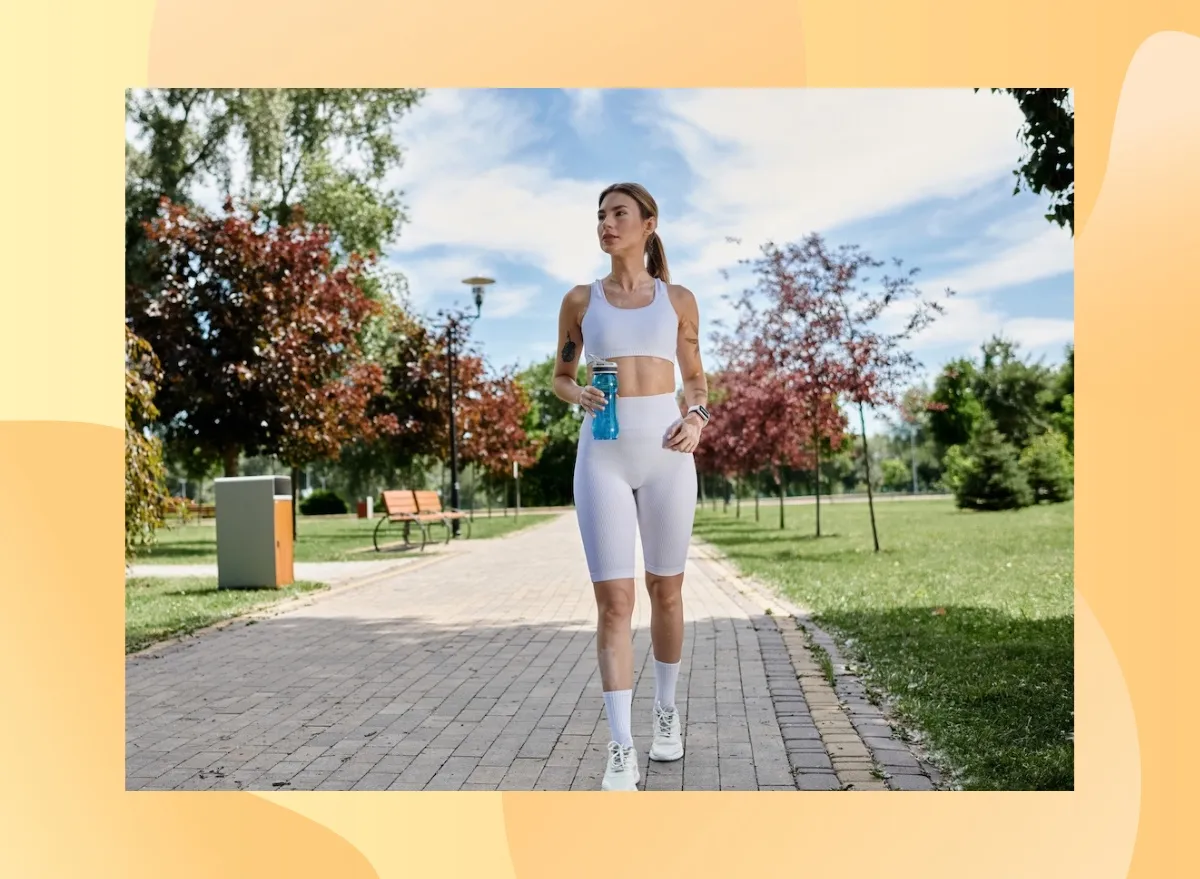Here's How Long Your Fasted Walking Workout Should Be To Shrink Belly Fat

Fasted walking has become a go-to fat-loss strategy for trimming their waistline without high-intensity workouts. The concept is simple: by walking before eating, your body taps into stored fat for energy, making it an efficient way to burn stubborn belly fat. But not all fasted walks are created equal—your results depend on how long you walk, your intensity, and your overall diet and lifestyle habits. Get these factors right, and you'll turn a basic walk into a fat-burning powerhouse.
But does fasted walking truly work, or is it just another fitness myth? Science suggests that exercising in a fasted state may increase fat oxidation (fat burning), insulin sensitivity, and metabolic flexibility, all of which support weight loss. However, simply walking without considering intensity or duration won't be enough to make a significant impact. To shrink belly fat effectively, you must walk at the right pace, for the right amount of time, and with the right strategy. Let's dive into the specifics so you can start walking your way to a leaner physique.
The Science Behind Fasted Walking & Belly Fat Loss

Fasted walking utilizes your body's energy systems. When you wake up after an overnight fast, your glycogen (stored carbohydrate) levels are lower, forcing your body to rely more on fat for fuel. Studies suggest that low-intensity, steady-state exercise, like walking, is one of the best ways to tap into fat oxidation when training fasted.
But here's the catch: walking in a fasted state won't magically melt belly fat unless you're in a calorie deficit. However, it can support fat loss by increasing your body's ability to burn stored fat for energy. Fasted walking may also help regulate insulin sensitivity, making managing blood sugar easier and preventing excessive fat storage.
Cortisol, the stress hormone, is naturally higher in the morning. While some worry this leads to muscle breakdown, low-intensity activities like walking won't cause muscle loss, especially if you get enough protein throughout the day.
Key takeaway: Fasted walking increases fat oxidation, improves insulin sensitivity, and supports fat loss, especially when paired with a healthy, calorie-controlled diet.
The Ideal Duration & Intensity for Maximum Fat Burn

Time and intensity matter to make fasted walking effective for belly fat loss. The sweet spot? 30 to 60 minutes of moderate-paced walking.
- For beginners: Start with 30 minutes at a pace of 3–3.5 mph (a steady but comfortable walk).
- For advanced walkers: Extend to 45 to 60 minutes and aim for a faster pace of 3.5–4 mph to increase calorie burn.
- For time-crunched individuals: A 20-minute fasted walk at a slightly higher intensity (power or incline walking) can still be practical.
What about heart rate? Staying in Zone 2 (60–70% of your max heart rate) optimizes fat oxidation. If you go too hard (like sprinting), your body shifts toward using more carbohydrates for fuel, defeating the purpose of fasted cardio.
When should you do fasted walking?
- First thing in the morning before eating (best option for maximizing fat burn).
- After 4 to 6 hours of fasting (if intermittent fasting is part of your routine).
Key takeaway: For optimal fat burning without stressing the body, aim for 30 to 60 minutes of brisk walking at a heart rate of Zone 2.
Fasted Walking Strategies To Speed Up Fat Loss

Want to take your fasted walking results to the next level? These strategies will help accelerate belly fat loss:
- Walk on an Incline or Use Stairs: Adding an incline activates more glutes, hamstrings, and core muscles, increasing calorie burn without walking longer. If outdoors, find a hill; if on a treadmill, set an incline of 5–8%.
- Use a Weighted Vest: A light 5–10% of your body weight in a vest increases intensity without adding impact stress. This helps burn more calories and can lead to better weight loss.
- Try Fasted Interval Walking: Instead of walking at one steady pace, incorporate intervals to boost metabolism:
- Walk at a normal pace for 3 minutes
- Walk at a fast pace (almost a jog) for 1 minute
- Repeat for the duration of your workout
This method keeps your heart rate elevated and increases post-exercise calorie burn, making your body work harder even after you finish.
- Stay Hydrated and consider Black Coffee or Green Tea. Hydration plays a crucial role in fat metabolism. Drinking 16–20 ounces of water before walking keeps your body functioning efficiently. A cup of black coffee or green tea before your walk can enhance fat oxidation without breaking your fast.
- Follow Up With a Protein-Rich Meal: After your fasted walk, don't skip refueling. Eating a high-protein meal with healthy fats (like eggs, Greek yogurt, or a smoothie with protein powder) prevents muscle loss and supports metabolism.
Key takeaway: Increase calorie burn by adding inclines, weighted vests, or intervals. Stay hydrated and fuel up post-walk to maintain muscle and metabolic health.
Final Thoughts
Fasted walking is a simple yet effective way to burn more fat, especially around the midsection. Aim for 30–60 minutes of brisk walking at a moderate pace to maximize results. Want to speed things up? Add inclines, resistance, or interval training to increase calorie burn.
Most importantly, stay consistent. Fasted walking alone won't shred belly fat overnight, but combined with a calorie deficit, strength training, and quality nutrition, it becomes a potent tool in your fat-loss routine.
References:
- Zouhal, Hassane et al. "Exercise Training and Fasting: Current Insights." Open access journal of sports medicine vol. 11 1-28. 21 Jan. 2020, doi:10.2147/OAJSM.S224919
- Carey, Daniel G. "Quantifying differences in the "fat burning" zone and the aerobic zone: implications for training." Journal of strength and conditioning research vol. 23,7 (2009): 2090-5. doi:10.1519/JSC.0b013e3181bac5c5








